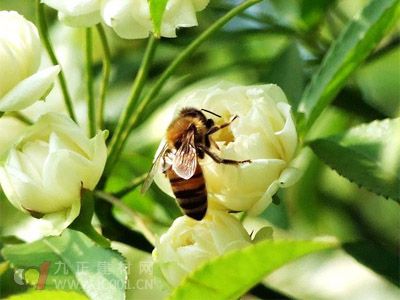Woody flower original form:
Yunmuxiang is a perennial tall herb. It has a thick, cylindrical main root with a brown surface and sparse roots. The roots are triangular-ovate or long-triangular in shape, ranging from 30 to 100 cm in length and 15 to 30 cm in width. The base extends into irregularly divided wings. The leaf margins are irregularly shallow or wavy, with sparse short thorns. The leaves are dark green on top, covered with short hairs, and light greenish-brown underneath, also with short hairs, especially along the veins. The petioles are 1.5 to 2 times the length of the leaf blade.
The flowering stems can grow up to 30 to 200 cm tall, with fine ribs and pubescence. The leaves on the flowering stems range from 10 to 30 cm in length, with short stalks or no stalks at all. The flowers are terminal or axillary, sometimes in clusters. The pedicels are short or absent. There are about 10 layers of sepals, which are triangular-lanceolate, measuring 9 to 25 mm in length. The outermost sepals are the shortest, with a long acute tip and sparse hair. All the flowers are tubular, dark purple, with a tube length of 1.5 cm and five lobes, each about 6 mm long. There are five stamens inserted below the lobes, with sessile anthers and hard hairs. The achenes are linear, with an obtuse tip, about 6 mm long, and have a yellow erect feather crown at the top, approximately 1.5 cm long. When the fruit matures, it often has a residue at the base. Flowering occurs from July to September, and fruiting takes place from August to October.

Woody flowers typically grow in higher mountain regions. They are native to India and are cultivated in Yunnan, Guangxi, and Sichuan provinces in China.
Yuexi Muxiang is another type of perennial herb. Its roots are thick and strong. The stem is about 7 cm tall. The stem leaves are obovate or oblong-lanceolate, measuring 13 to 30 cm in length and 5 to 12 cm in width. They may be undivided or rarely irregularly divided, with a blunt apex and a gradually narrowed base. The petiole is 4 to 10 cm long and 1 cm wide. The leaf margins have rib-like serrations, membranous texture, and oblong pubescent hairs. There are sparse glandular spots underneath, and the leaves are subglabrous, becoming glabrescent along the veins and margins.
Most of the flower heads are arranged in groups of about 8. Each head is ovate-ovate, measuring 25 to 30 mm in diameter. The corolla is about 26 mm long, with a very narrow tube and lobes that are twice as short as the crown. The outer layer has glands. The anthers are blue, about 8 mm long. The stigma has a small scorpion-like structure, with branching linear parts measuring 3 to 4 mm. The crests consist of nearly three layers, all erect and yellow-stained. Unripe achenes are smooth with ridges.
This plant grows on the edges of forested hillsides and grasslands. It is found in southwestern Sichuan.
Chuan Muxiang is a perennial herb with thick, straight roots. The stem is extremely short. The leaves are ovate or oblong-lanceolate, shallowly lobed, and densely covered with pubescence on both sides, including arachnid filaments and sparse glandular hairs. The locules are sessile or dentate.
The plant produces 6 to 8 flower heads, located at the top of branches. The total inflorescence is campanulate, with four sepals, lanceolate in shape, green with purple tints. All the flowers are tubular, purple in color, with a corolla about 30 mm long and a tube about 20 mm long. The crown hairs are brownish yellow, and the outer layer of the crown is wrinkled. The achenes are quadrangular and sparsely villous. Flowering occurs during summer and autumn.
It grows on hillside grasslands and is distributed in western Sichuan and Tibet.
Classic Soap Dispenser,Soap Dispenser Bottle,Automatic Soap Dispenser Uk,Supporing Chrome Soap Dispenser
Kaiping Jenor Sanitary Ware Co., Ltd , https://www.jenorsanitary.com